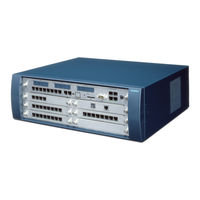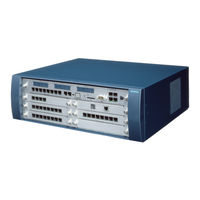Siemens HiPath 3800 Manuals
Manuals and User Guides for Siemens HiPath 3800. We have 2 Siemens HiPath 3800 manuals available for free PDF download: Service Documentation, Service Manual
Siemens HiPath 3800 Service Manual (1202 pages)
Table of Contents
-
-
-
Overview19
-
-
-
-
Overview35
-
Hipath 300037
-
Hipath 3000
38 -
-
Hipath 3300
52 -
-
-
Hipath 370068
-
-
-
Overview102
-
Central Boards108
-
-
Csape180
-
Diun2186
-
Hxgm3190
-
Hxgs3, Hxgr3196
-
Ivml8, Ivml24205
-
Ivmnl, Ivmn8210
-
Ivms8, Ivms8R220
-
Slma, Slma8266
-
Slmo2, Slmo8286
-
Table 3-96 Table298
-
Slu8302
-
Slu8R303
-
Stls4R311
-
Stmd3318
-
Stmd8324
-
Stmi2334
-
Tiel340
-
Tm2Lp359
-
Tmew2393
-
Figure 3-135 S417
-
Figure 3-139 S423
-
8Slar428
-
-
Options430
-
Alum4430
-
Amom434
-
Evm445
-
OPAL and OPALR454
-
Real459
-
Reals463
-
Strb, Strbr469
-
V.24 Adapter476
-
V.24 Cable477
-
-
-
-
Overview479
-
-
Overview486
-
CHAMP Jack541
-
Connectors542
-
Figure 4-44 S554
-
Installing the S555
-
-
Overview571
-
Mdfu-E605
-
Cabinet618
-
Figure 4-83 S626
-
-
-
-
-
Introduction707
-
Hipath 5000715
-
-
IP Network756
-
Getaccount761
-
-
-
Overview769
-
Introduction769
-
Introduction779
-
-
Hipath 5000 RSM798
-
-
-
-
Overview815
-
-
Components826
-
-
-
Overview853
-
Optipoint 500858
-
Connection866
-
Optipoint BLF870
-
And Adapters885
-
-
Add-On Devices913
-
Optilog 4Me921
-
Hipath AP 1120930
-
-
Gigaset Active M940
-
-
-
Overview949
-
Introduction950
-
-
Roaming960
-
-
-
12 Service
963-
Overview963
-
-
APS Transfer974
-
Manager978
-
-
Power Supplies986
-
Licensing Analysis1007
-
Manager1008
-
Correcting Errors1032
-
Remote Service1034
-
Security Features1041
-
Access Security1041
-
Table 13-1 Table1045
-
Logging1048
-
-
-
13 IP Fundamentals
1053-
Overview1053
-
-
General Introduction1054
-
Protocol1054
-
Standards Supported1055
-
-
Network Analysis1058
-
-
-
Advertisement
Siemens HiPath 3800 Service Documentation (1302 pages)
Brand: Siemens
|
Category: Conference System
|
Size: 17.35 MB
Table of Contents
-
-
-
Notes32
-
Emergencies34
-
-
Hipath 300043
-
Hipath43
-
Hipath 500081
-
-
-
Numbering Plan124
-
-
-
Central Board149
-
Diun2216
-
Diut2220
-
Hxgs3, Hxgr3227
-
Ivmnl, Ivmn8233
-
Ivmp4, Ivmp4R237
-
Ivms8, Ivms8R246
-
Ivms8N, Ivms8Nr252
-
Slad16265
-
Slma, Slma8300
-
Slmav8, Slmav24321
-
Slmo2, Slmo8332
-
Slu8348
-
Slu8R350
-
Stls4R358
-
Stmd3365
-
Stmi2371
-
Tm2Lp394
-
Tlani4R409
-
Tmew2459
-
Options485
-
Alum4486
-
Amom490
-
Evm502
-
OPAL and OPALR510
-
Reals515
-
Strb, Strbr522
-
USB V.24 Adapter527
-
V.24 Adapter530
-
V.24 Cable531
-
-
-
-
-
Overview539
-
-
-
Installing the S609
-
-
-
-
-
-
Introduction684
-
-
-
Bandwidth694
-
-
-
Getaccount734
-
-
8 Licensing
751
Advertisement

